Ertach Kernow - Pictures of Past Cornish towns
Pictures of Past Cornish towns - Within the living memory of many readers there have been huge changes in the production of newspapers. Once they were all broadsheets, large and unwieldy, but in 1971 after absorbing the Daily Sketch, an early tabloid sized paper, the Daily Mail became the first major daily to change from broadsheet to tabloid.
Gradually our own Cornish based newspapers changed to the tabloid size. Over the years the language used changed with the number of images in the newspapers increasing substantially. In 1921 advertising executive Fred R. Barnard took out an advert in Printers Ink with the headline ‘One Look Is Worth a Thousand Words’ referring to the use of images on book jackets encouraging people to buy them. He later in 1927 changed this to ‘Chinese Proverb: One Picture Is Worth Ten Thousand Words.’ He commented that graphics can tell a story as effectively as a large amount of descriptive text. With the use of eloquent and descriptive language decreasing measurably since the early 20th century, perhaps something has gradually been lost along with some of the wonderful words used back then.
Colourful images now form an important part of our community newspapers and certainly with these Ertach Kernow heritage articles, varying in time and subjects, finding appropriate historic images for these articles can be challenging. These vary greatly from personally taken images, to those from historic sources such as paintings and engravings from antique and vintage books. This week we look at some of the engravings that have been included within various articles over the past year. Engravings are often stylised, however in the absence of photographs they along with paintings from those times are the best view of something that may be long gone or since changed.
Engraving evolved from the earliest wood cut engravings of the 15th century, although occasionally used through to the early 19th century. From the early 17th century copper became the most popular medium for engraving plates as it was easy to use being relatively soft and did not rust. However, being soft it did wear out rather quickly on mass production of print runs, with the lines becoming less sharp over time. From about 1850 steel was used enabling lines to be carved finer and closer together, with the plates lasting far longer. Technological advances in printing during the 19th century led to increasing numbers of colour engravings, whereas before these needed to be hand coloured using water colours. Although quality varied depending on the colourist, coloured engravings created a far more engaging image. The additional cost of colouring engravings meant that this was used only with high quality books, even after technology made it possible as part of the printing process.
Most early images of Cornish places, houses and towns tended to be uncoloured and of course it would only be those settlements that were important or had sufficient to mention which would have engravings produced. Often books had subscribers and to encourage wealthy patrons there may have been an engraving of their residence, or seat as they were often known included. Older towns such as Lostwithiel had engravings produced earlier, such as that by Samuel and Nathaniel Buck in 1734. Newquay as a newer town had to wait into the age of photography for engravings, similar to that produced by the Illustrated London News in 1891. Both Bodmin and Truro were historic Cornish towns, still awaiting their elevation to Cornwall’s capital in turn during the 1830’s. St Austell depicted in 1803 as a small community would with the opening of rich mining close by grow rapidly. Penzance and Saltash at opposite ends of Cornwall would also grow based on their own local opportunities. Only through these engravings do we get some idea of what these towns would have looked like some two hundred years ago.
The Illustrated London News was a magazine that grasped the idea of using images to sell more copies and was produced around that concept. The first edition was published in 1842, the world’s first illustrated weekly news magazine. After 20 years it was selling 300,000 copies per week a huge number compared to the national daily newspapers. Although use of photographs began from 1890 it continued to use graphics until after World War I. Cornwall featured regularly in the Illustrated London News and other similar magazines, like The Graphic that started publication in 1869. It is through these national British papers that we gain some visual idea of news and activities in Cornwall during the 19th century. Increasingly book authors and producers began to increase the number and quality of illustrations and engravings within their publications. A good example of this was the artist F.W.L. Stockdale who toured Cornwall during the early 1820’s.
He produced a number of drawings that were turned into engravings for his book ‘Excursions through Cornwall’, published in 1824. The book provided an interesting range of engravings showing a number of towns and places as they appeared at that time adding much to his written descriptions. A further range of drawings were produced by Thomas Allom during the early 1830’s for engravings to be included in the volume ‘Devonshire and Cornwall illustrated’, which also included historical and topographical descriptions. I have previously mentioned Cyrus Redding in earlier articles, who wrote ‘An Illustrated Itinerary of the County of Cornwall’ and produced a number of drawings and illustration in his book. Many of these and others are of high quality and certainly provide good views of Cornish towns and places during the late 18th and early 19th centuries and creating a base for Cornwall’s visual heritage record.
In due course photographs would become the norm as technology advanced and methods of fixing the images and producing them economically in print evolved. Those of us who enjoy seeing how Cornwall looked in the distant past must be thankful to those artists and illustrators, as well as the crafts persons producing the printing plates from their artwork. Without them our view of Cornwall before the days of photography century would be much diminished.
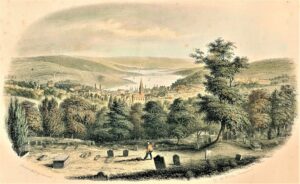
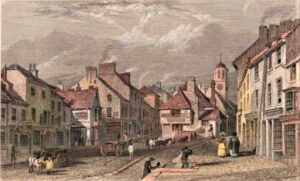
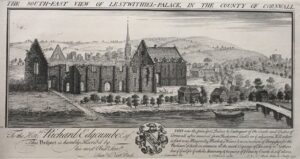
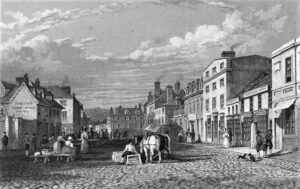
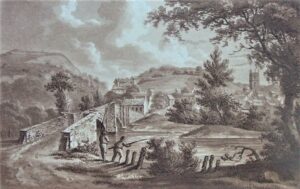
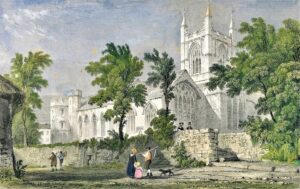
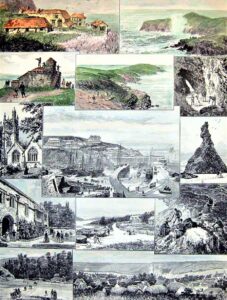
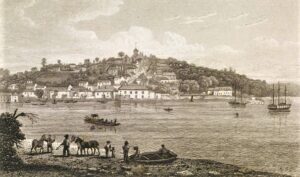
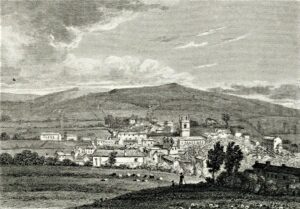
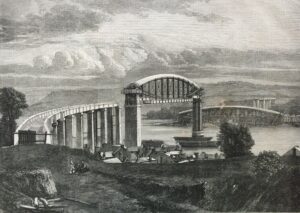
![[79] Voice - Ertach Kernow- 2921221A Pictures of the past [S] Ertach Kernow - Pictures of the past](https://www.cornwallheritage.com/wp-content/uploads/2022/01/79-Voice-Ertach-Kernow-2921221A-Pictures-of-the-past-S-230x300.jpg)
![[79] Voice - Ertach Kernow- 2921221B Pictures of the past [S] Ertach Kernow - Pictures of the past](https://www.cornwallheritage.com/wp-content/uploads/2022/01/79-Voice-Ertach-Kernow-2921221B-Pictures-of-the-past-S-225x300.jpg)
![[79] Ertach Kernow Heritage Column - 29th December 2021 - A year in our Cornish story Ertach Kernow Heritage Column - A year in our Cornish story](https://www.cornwallheritage.com/wp-content/uploads/2022/01/79-Ertach-Kernow-Heritage-Column-29th-December-2021-A-year-in-our-Cornish-story-287x300.jpg)